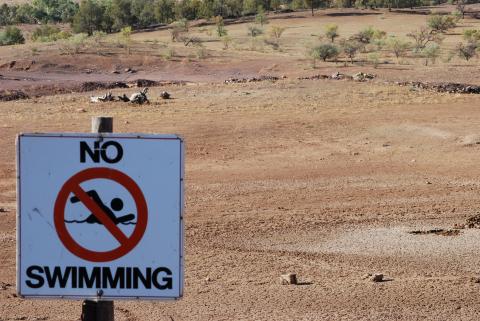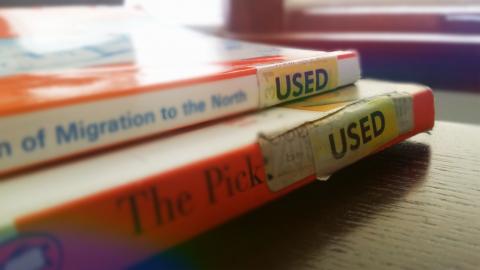Four Years Dry
May 23,2015
California has been in the news recently as the severe drought that has effected the west coast now enters its fourth year. The state has been trying to combat the water shortage with a variety of measure from incentives for low water consumption to heavy fines for over use. Officials estimate that roughly 94% of California is in severe drought or worse. With the west coast farming industry on the verge of collapse and many citizens forced to forego the luxuries of running water, many wonder if the drought will ever break. Why is water consumption only discussed during a drought? Why do we only worry about water supplies once there gone?
Fresh water is our most precious resource, however in America our infrastructure has allowed for consistent easy access which has made water undervalued. The Earth is 75% water with around 98% of that being unusable saltwater. That leaves 2% freshwater, however half of that is locked in frozen ice, so in the end there is only 1%(of the roughly 2% freshwater) available for life’s needs. These rounded percentages hopefully show how supply cannot keep up with the demand.
There has been a controversy over bottled water for a number of reasons, from the pollution hazard of the bottles from the extracting rate, bottled water is an environmentally harmful product. If you look at the label of a bottled water, there is a high chance that it came from, of all places, California. A large portion of bottled water is coming from the most drought ridden region of our country. Like I said, the bottle water industry has some controversy, and often works in a shady manner if you will, and with few people being aware of or looking into where their water comes from there is little change made to their methods.
So water, always available for us here in the US, so no big deal right? Well what happens when it’s gone? What happens when these massive droughts become unmanageable? Where will people be forced to migrate? With the way things are heading I’d suggest investing in some Midwest real estate, the home of the largest fresh water system in the world, more commonly referred to as the Great Lakes. But even the Midwest has problems with lack of appreciation for this resource so preciously required for survival. Pollution and extraction run ramped. However, we supply this exploitation by buying into it. Every product we buy, as consumers we are saying what kind of world we want to live in.
My words of caution are, be an educated consumer. Look at the products you buy and use on a daily basis, and see where they are from. Look into their environmental impact and how they get to your shopping cart. Every living thing on earth needs water to survive, it’s the elixir of life. So let’s not worry about it once it’s gone, let’s figure out how to make our water use sustainable, so generations to come don’t have to fix this hole we seem to keep relentlessly digging ourselves into.






